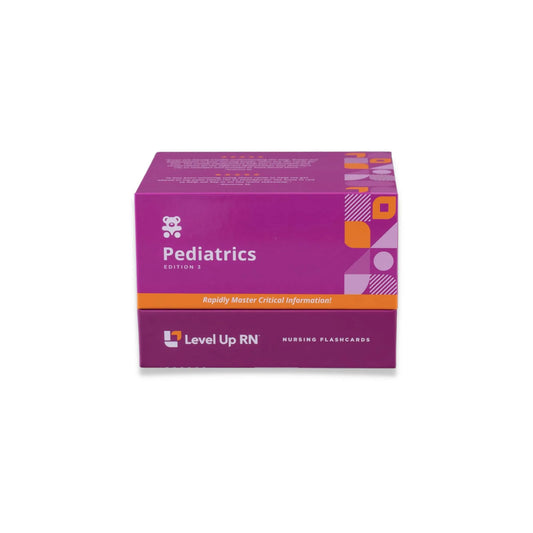Hi, I'm Cathy with Level Up RN. In this video, I am going to begin my coverage of integumentary system disorders from our Level Up RN pediatric nursing flashcards. Specifically, I'll be talking about congenital dermal melanocytosis and cradle cap. And at the end of the video, I'm going to give you guys a little quiz to test your understanding of some of the key points I'll be covering. So definitely stay tuned for that. And if you have our flashcards, go ahead and pull them out so you can follow along with me.
Congenital dermal melanocytosis, which is also known as slate gray nevus, is the blue-gray discoloration of the skin that is present at birth or shortly thereafter. This was previously referred to as Mongolian spots, but this term is no longer considered appropriate and should be avoided. This condition is caused when melanocytes, which are cells that produce melanin, remain in the dermis during fetal development. Congenital dermal melanocytosis is more common in Black, Asian, and Hispanic populations. Signs and symptoms include multiple blue-gray or blue-green lesions that are often present on the lower back or buttocks. And as I mentioned before, these lesions will be present at birth or shortly thereafter, and they are not itchy or painful. So congenital dermal melanocytosis is harmless and treatment is unnecessary. And in many cases, these lesions will fade over time. Unfortunately, these lesions can be mistaken for bruises, which may lead some providers to suspect abuse. So it's going to be really important to document the location of the lesions in the patient's medical record to alert future providers that these are preexisting and not a sign of abuse.
Next, we have cradle cap, which is a common type of seborrheic dermatitis that affects the scalp of an infant. The exact cause of cradle cap is not known, but it is thought to be related to overactive sebaceous glands and/or the presence of Malassezia, which is a type of yeast found on the skin. Cradle cap is most common during the first year of life, and signs and symptoms include scaly, greasy, yellow patches that do not come off easily. And of note, these patches are not itchy or painful. Cradle cap typically goes away on its own, so treatment is not necessary. To help soften and remove scales, the caregiver can apply an emollient such as baby oil to the area, let it sit for a little while, and then use a soft toothbrush or a cradle cap comb to gently remove the scales. In addition, washing the baby's hair daily with a mild baby shampoo can help soften the scales and help to prevent recurrence of cradle cap. For extensive cradle cap or cradle cap that doesn't improve with conservative measures, then a topical antifungal agent or topical steroid cream may be recommended by the provider.
All right. It's quiz time, and I've got three questions for you.
Question number 1, congenital dermal melanocytosis can be treated with a steroid cream, true or false?
The answer is false. No treatment is needed for this condition.
Question number 2, why is it important to clearly document the presence of congenital dermal melanocytosis in the patient's medical record?
The answer is to alert future providers that these lesions are preexisting and not a sign of abuse. And then question number 3, how can a caregiver treat cradle cap at home?
The answer is they can apply baby oil or another emollient to the area and then gently remove the scales with a soft toothbrush or a cradle cap comb.
All right. That's it for this video. I hope it was helpful. Take care, and thank you so much for watching.


